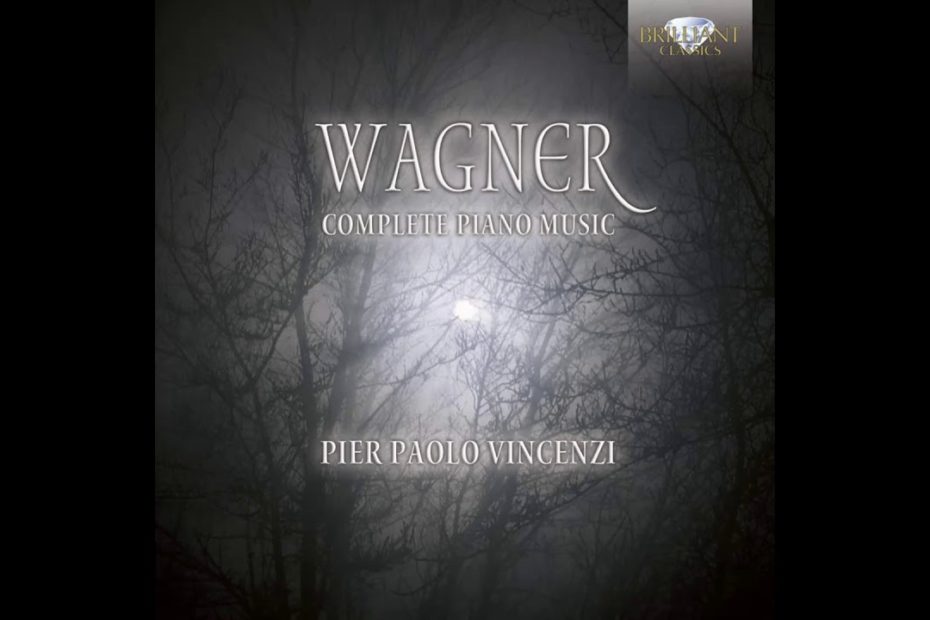Performed by Pier Paolo Vincenzi
I – Allegro con brio: 0:00
II – Larghetto: 8:50
III – Menuetto. Allegro – Trio. Meno allegro – Tempo I: 17:33
IV – Finale. Allegro vivace: 21:25
Wagner’s adolescence was marked by truancy, gambling, drinking, political involvement, and an indefatigable, if blundering, passion for music. In childhood, Carl Maria von Weber had been a frequent visitor to the family in Dresden, and a hearing of Der Freischütz prompted Wagner to copy music and (though he was no prodigy) take to the piano. He grappled with any scores that came his way: a Haydn quartet necessitated reading the viola clef and, thus stimulated, he composed a string quartet of his own, now lost. In Dresden he heard the Fidelio overture, initiating an interest in Beethoven, though it was not until his family’s move to Leipzig, with its greatly expanded musical opportunities, that his enthusiasm blossomed into ardor with a hearing in 1828 of Beethoven’s Seventh Symphony at a Gewandhaus concert.
Transported, he began to absorb everything of the composer’s he could lay hands on, transcribing the Ninth Symphony for piano (which he offered, unsuccessfully, to publisher Franz Schott) and studying the piano sonatas. Mozart’s Requiem and Don Giovanni were further revelations, from the latter he derived his fledgling practice of orchestration. His spotty education was supplemented by voracious reading: Shakespeare and E.T.A. Hoffmann were favorites. At 16, a bizarre acquaintance and music lover, one Flachs, who seemed to Wagner a character out of Hoffmann, arranged one of his airs for band and had it performed at a tavern garden concert. Wagner’s first public exposure.
After tormenting the household for months, violin lessons were discontinued. The 17-year-old’s Overture in B flat major, featuring a ff drumbeat every fifth bar, was given in a charity concert at the Leipzig Court Theater on Christmas Eve 1830, provoking howls of laughter. Such obvious deficiencies in his own attempts to master composition led him in the fall of 1831 to the cantor of Leipzig’s Thomaskirche, Christian Theodor Weinlig, who enjoyed a local reputation as a teacher and contrapuntist. This, too, began badly, though after being dismissed Wagner, in desperation, begged Weinlig to re-accept him and the two spent a close six months, from October to March 1832, in the study of harmony, canon, and counterpoint.
After studying a piano sonata by Ignaz Pleyel, Wagner composed a Piano Sonata in B flat major: a spirited and respectable apprentice work reflecting the influence of Pleyel, Beethoven, Weber, Schubert, and Bellini. He dedicated it to Weinlig, who persuaded Breitkopf and Härtel to publish it at Easter 1832, earning for the composer a fee of 20 thalers. The work is divided in the classical structure of four movements.
The first movement is written in sonata form. It begins with five strong chords, giving way to a main theme based on an arpegiated figure on the left hand and a vivacious melody on the right one. The second theme is lyrical and delicated, with again the melody on the right hand and a series of supporting chord and arpeggios on the left hand, giving the proper contrast to the music. Then comes a complete reexposition of both themes. The development, based on the main theme, is brief but with some slightly drammatic modulations. Then a varied recapitulation comes, ending with a decided chord.
The second movement is written as a slow rondo (A-B-C-A’-A-B-C-A”-Coda). It begins with a lyrical main theme, full of a nostalgic feeling. The second theme, derived from the first one, is more ornamented and passionate. The third theme features decorative ascending/descending lines on the left hand. Then comes a varied recapitulation of the main theme, with several changes, followed by a reexposure of the original theme. Second and third themes are repeated, followed by a new variation of the main theme. The brief coda ends gently.
The third movement is a classical Menuetto. The main theme is moderate but rhythmic in nature. The trio is also dynamic but melodic. After the reexposition of the menuetto, a brief reminiscence of the trio is followed by a delicated coda based on the main theme.
The fourth movement is also written in sonata form. The first theme is energic and fast, followed by a melodic second theme, almost like a waltz. The themes follow a similar construction pattern seen in the first movement. Both themes are completely reexposed, followed by a brief development that almost consist of recapitulations that modulate the themes. The coda ends the work with energy.
Sources: https://www.allmusic.com/composition/piano-sonata-in-b-flat-major-wwv-21-op-1-mc0002387200
Musical analysis done by myself




